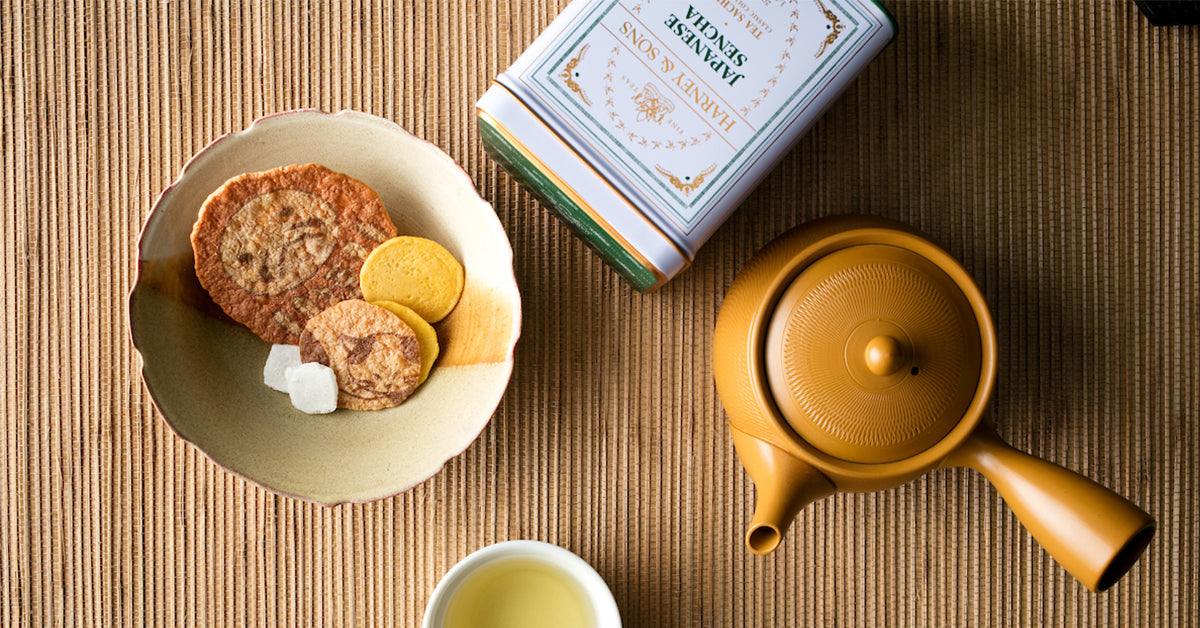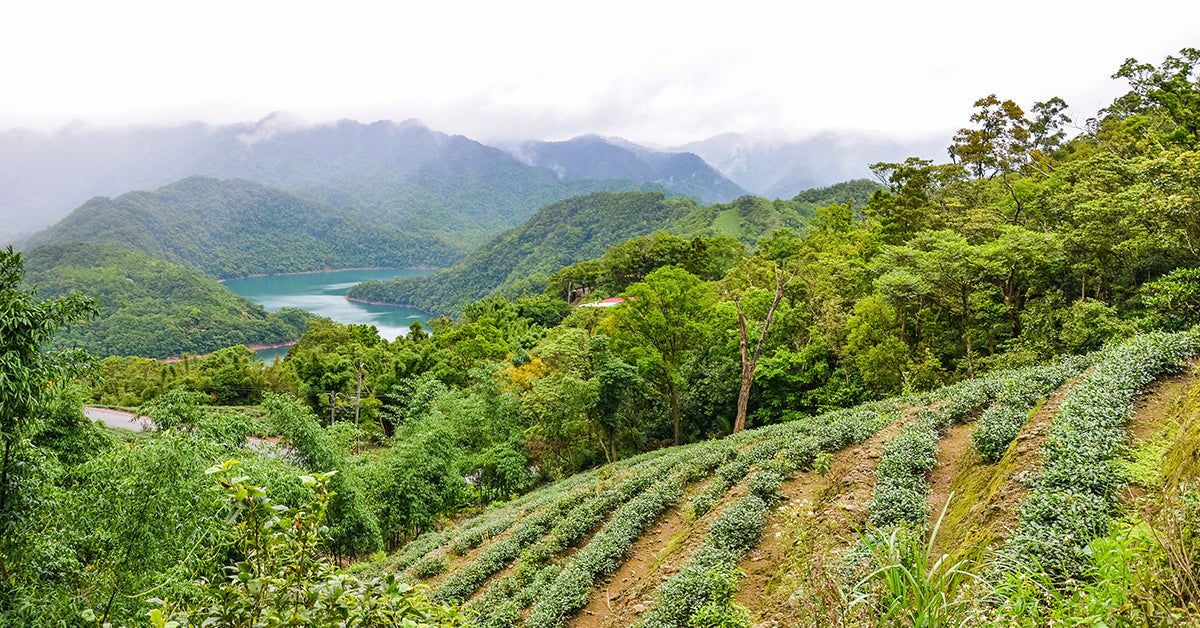
When it comes to talking about tea, it’s true that China rather hogs the spotlight. Sure, that’s where tea got its big break, and China deserves a lot of credit for helping tea hit the big time. But Japan’s got its own reasons to brag about tea, too. Quite a few, in fact.
The original homeland for tea in China was quite inland. One of the ways it spread was through Buddhist monks. The long religious ceremonies, late at night in cold and dank buildings, helped the monks develop a love for a warm beverage that had caffeine. Eventually, the monks established monasteries near the coast. Being evangelists, they were always looking for converts. A few Japanese came to those monasteries to “get religion.” And they also took tea with them back to Japan.
I have visited one such monastery in Jin Shan (now in Zhejiang Province) China. They do say that it was one of the sources of tea plants for Japan. Also, I have visited a Zen Buddhist monastery outside of Uji (near the ancient capital of Kyoto). It was here that one of the first tea gardens was established. The farmers did not know how to plant the tea plants. So the monk jumped on a workhorse and plodded down the field. He said,” Put them in the hoof prints.”
All of this may be true. Not having been there myself at the time, I cannot say for certain.
Over the years, Japanese tea growers took care of the Emperor and his court, then the Samurais and other nobles. It was only as a middle class developed in the 1800s that tea such as sencha was popularized. After Admiral Perry “opened” Japan in 1853, these green teas were exported. In fact, many Americans in the early 20th century came to love Japanese tea. Just as we Harneys have -- the tea, the growers, and the beautiful tea gardens. So much to love.

The Harneys in Japan
I took my first trip to Japan with my wife and our youngest son. Bert was 10 at the time, he is now 29. So that means the first trip was 19 years ago. I have been about every three years, so that makes it about six trips to Japan.
As I’ve mentioned previously, my father (and founder of Harney & Sons, John Harney) wasn’t much for travel and never visited Japan. He bought Japanese teas through our New York City importer, Bill McMelville. When I joined Dad in 1988, I slowly found different suppliers… and I wanted to visit Japan. So I went on this newish thing called the internet and looked for tea suppliers over there. Only two responded to me and this tiny American tea company called Harney & Sons. Nineteen years later, those are our Japanese suppliers: Kaburagien and Sugimoto. Both are tea traders, and Tsuyoshi Sugimoto also grows and makes teas. In fact, just outside his house in Uji is a nice Gyokuro field. Through them, we have met some wonderful Japanese tea producers: the Otsuka family and Matsuda.
One of my favorite memories of being in Japan is from 2002. Being my first trip, the memory is burned into my mind. Visiting the Imperial Gardens in Tokyo and seeing a tea plant for the first time, taking a Shinkansen bullet train for the first time, going to Kakegawa and meeting the Otsukas for the first time and then going to a high mountain resort, meeting Matsuda for the first time and seeing his house high in the tea fields of the Watsuka valley of tea, staying at a Ryokan (B&B) along the banks of the Uji river, next to the famous Byodoin Temple. It was a great trip.
And the ones that followed were also wonderful. Never a bad time in Japan!

Let’s Talk Japanese Green Teas
When it comes to the place where Japanese green teas come from, Uji is where it all started. Later, large fields were developed along the slopes near Shizuoka, and later the plains outside of Kagoshima were planted. Yes, there are other areas, but these are our usual suspects. The Japanese say Uji is the most delicate, Shizuoka the most flavorful, and Kagoshima the earliest.
I am often asked what makes green tea a green tea. It goes like this: tea plants are green since the chlorophyll photoreceptor reflects back blue and yellow (making green) while it converts sunlight into energy for the tea plant (and others too). Green tea is one where the tea leaves are “fixed” green. If it is not fixed green, the leaves would turn brown and then black, as the PPO enzyme reacts with oxygen (aka oxidation -- forgive all the sciency lingo!). The Japanese favor using steam to fix it green (unlike the Chinese). The fresh-plucked leaves are quickly steamed and then go through a complex set of steps that straighten and dry the wet leaves.
Matcha, which is made from the green tea tencha, has a completely different set of steps to process the leaves into a finely ground powder.
As mentioned, Japanese greens are different from Chinese due to how they are fixed. Japanese teas are fixed green using steam, and Chinese often use dry heat methods like a large wok or fry pan. The steaming allows the vegetal flavors to stay front and center. With Chinese flavors, the higher heat from the wok gives a more complex set of flavors.
Let’s Talk Harney Japanese Green Teas
We get our Japanese green teas from two main sources. We chose many of those teas a decade ago to represent different regions and styles. Is the tea deep-steamed or the original lighter steaming? The deep-steamed is easier to appreciate, but not as subtle as the lighter steamed.
Three years ago, we broadened our selection by adding a few teas that were similar but slightly different: Duck Rice Genamicha and Mist of Kawane. Later we added Golden Genmaicha and even a black tea: Japanese Whisky.

To learn to appreciate the differences in green teas, I would start with our basic Sencha - get to know that a bit and then branch out. Maybe different Senchas or a shade-grown Gyokuro. And then keep exploring, and you will find enjoyment.
Our customers love the selection of our Japanese teas. Me, personally, I love Matsuda’s Sencha. It is the result of one man’s (and his wife’s) work. The old-fashioned tea is fabulous. And while the vegetal flavors of many Japanese green teas (with their sometimes spinach-like aromas along with other green leafy foods) are not everyone’s cup of tea, so to speak, Japanese teas seem to be intuitive for most people. Once they taste properly brewed Japanese tea, they warm right up to them. Still, not 100% of the people enjoy them, but then not 100% of the people enjoy Hot Cinnamon Spice, either. Hard to believe, I know, but true.
For those folks who cannot get enough of those true green tea flavors, there is matcha, which has become increasingly popular here in the West but has long been a staple in Eastern cultures. Matcha is made from finely ground green tea leaves. The leaves are finished under a cover, so the leaves add more green chlorophyll to try and make up for reduced sunlight. People love the dark green color, and they like the mouth-filling body and sweetness of the higher-end matchas: Unjonotomo and Senjunomukashi. Also, many people are convinced that this is the healthiest of the healthy Japanese teas. People also say that green teas in general have more health benefits than other teas, but I will leave that for other people to say rather than have the FDA come looking for me.

Japanese Green Teas: Brewing and Tasting
When it comes to brewing green teas, they need less time and less heat than black teas. Black teas are often brewed for five minutes with boiling water. And Japanese teas are brewed with even cooler water than Chinese greens (160-175ºF) and less time (2-3 minutes).
If you’ve never tried a Japanese green tea, I’d encourage you to try these to get a nice sampling:
As there was obviously no traveling to Japan in 2020 and not so far in 2021, I haven’t been in a while. I miss the excitement of seeing the green fields and then going back to see those leaves made into tea. Tasting new teas with my Japanese friends will be something to be enjoyed again. And then the whole experience of the Japanese people, their food, and culture will be something to absorb into my being. I can’t wait!
Let's get this virus in the rearview mirror so we can look forward to experiencing our favorite things in life again! Meanwhile, transport yourself with some wonderful Japanese green teas. They’ve helped get me through until I can get back.
















1 comment
Betty Anne
I love reading these stories of your travels and how you have found your sources. And your photos are beautiful! So very interesting. You have convinced me to try some real green teas and to try to learn to appreciate the differences. Thanks so much.
I love reading these stories of your travels and how you have found your sources. And your photos are beautiful! So very interesting. You have convinced me to try some real green teas and to try to learn to appreciate the differences. Thanks so much.